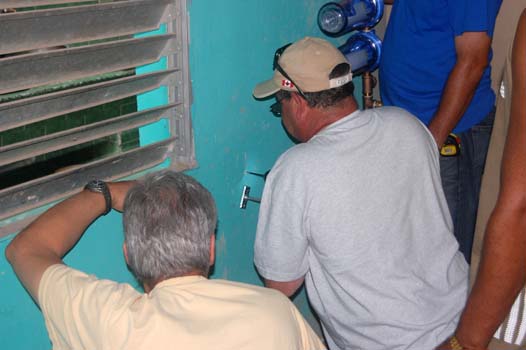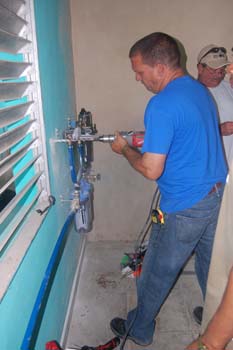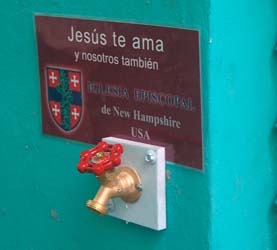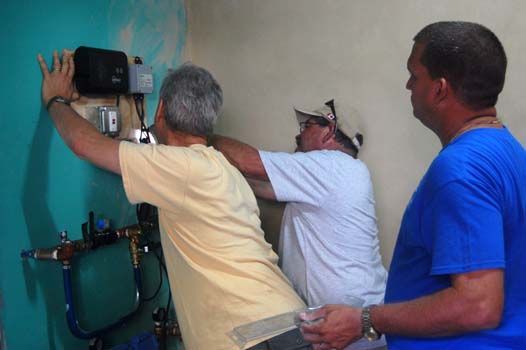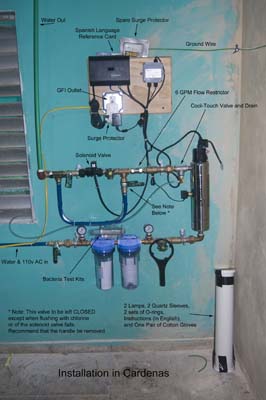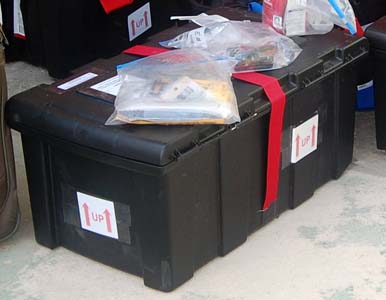
The Episcopal Church of New Hampshire March 2015 Mission Trip, led by The Rev. Mark Pendleton,
rector of Christ Church Exeter, consisted of 20 people, including members of Christ Church Exeter,
St. John's Portsmouth, Good Shepherd Nashua, and St. Paul's on-the-green, Norwalk, Connecticut.
A preliminary mission trip in early 2014
identified clean water as the biggest issue facing the people of
Cuba today.
Thanks to a Millennium Grant from the Episcopal Diocese of New Hampshire,
together with generous support from St. John's Portsmouth and many individuals,
we were able to purchase four water systems, two using micro-filtration, and two using UV light.
We chose to bring both technologies after considerable debate over the merits of each.
See the page
useful links
for a complete description of these systems, including vendors and part numbers.
In addition to the water systems, we brought a considerable amount of pharmacy items
such as over-the-counter medications and personal care items such as toothbrushes.
Such items are also very difficult to obtain in Cuba.

From Miami, we used the services of
Marazul Travel,
whose own charter airline, World Atlantic, charges $2 per pound over the allowed 44 pounds per person.
This is typical of charters to Cuba.
This charge was included in our budget calculations, and came to about $1500.
Domestic flights to Miami calculate checked baggage fees differently, typically
(for example, American Airlines) charging $25 for the first bag, $35 for the second, and $150
for a third checked bag, with a $100 charge for each checked bag over 50 pounds.
Therefore, each person was assigned only two pieces of checked luggage, and each item
was kept well under the 50 pound limit.
Individual group members were responsible for baggage charges to Miami.

We spent most of our time in Cardenas, where we stayed in the
Centro Cristiano de Reflexión y Diálogo-Cuba,
which we commonly referred to as the "Ecumenical Center."
It was a clean, comfortable place with individual rooms, private baths,and bottled water.

We took most of our meals at San Francisco de Asís Episcopal church in Cardenas,
which was also the location of our first water system installation.
Scroll down for details about both the UV and filtration system installations.
|

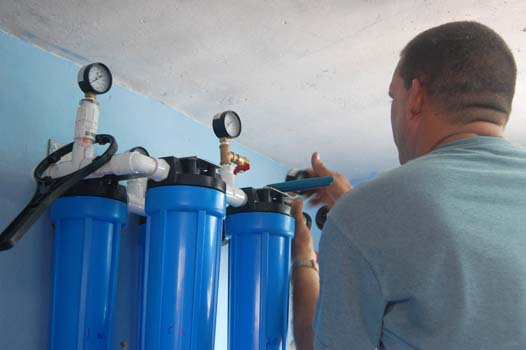
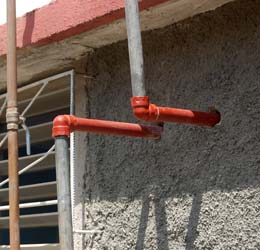
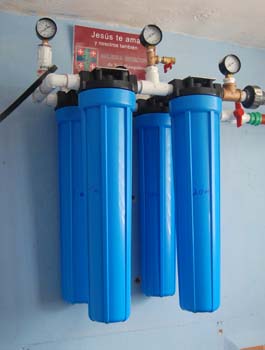
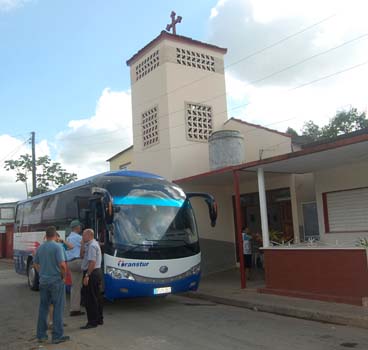
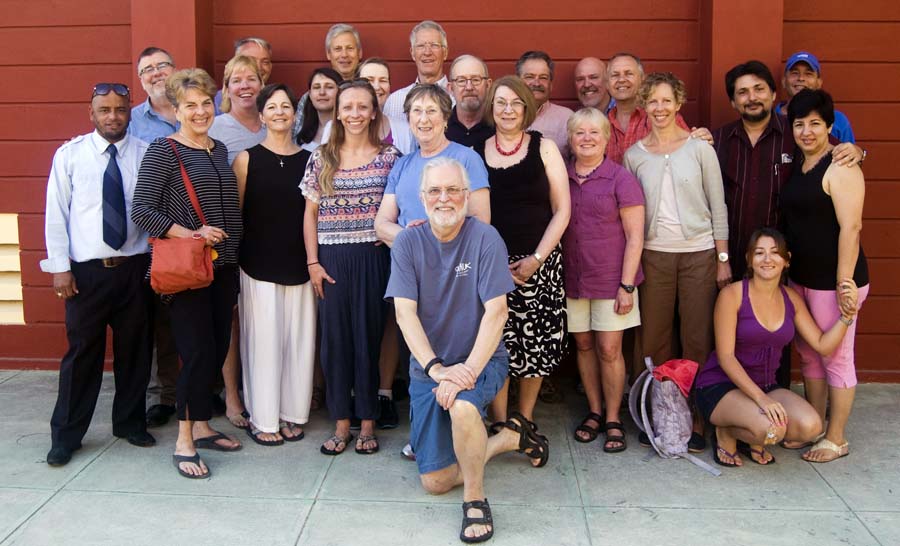




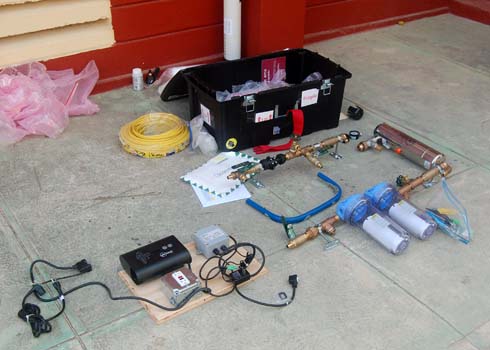 Much of the plumbing associated with the UVMAX system was pre-assembled before shipping,
which greatly facilitated installation.
Also, the controller and other electrical components were mounted to
a piece of plywood so that only one item (the piece of plywood)
needed to be mounted to the wall.
(For shipping, the controller was removed from the plywood and double-wrapped in bubble wrap.)
Much of the plumbing associated with the UVMAX system was pre-assembled before shipping,
which greatly facilitated installation.
Also, the controller and other electrical components were mounted to
a piece of plywood so that only one item (the piece of plywood)
needed to be mounted to the wall.
(For shipping, the controller was removed from the plywood and double-wrapped in bubble wrap.)
